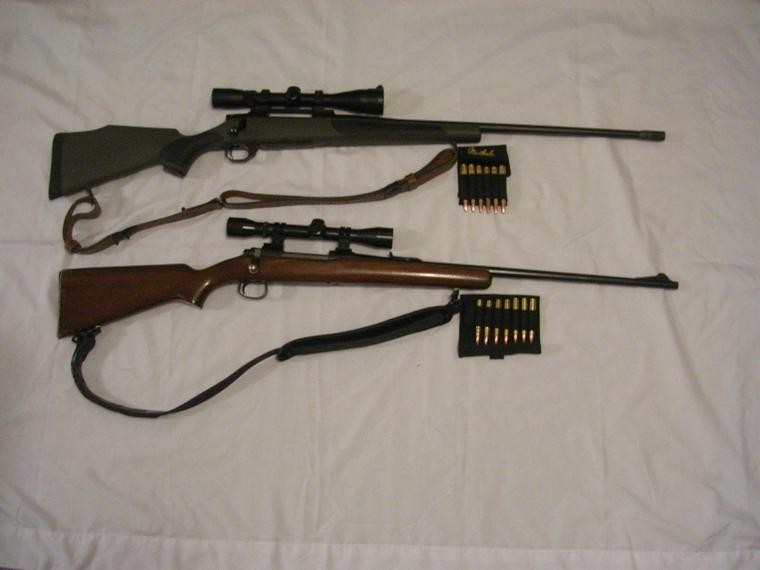I probably ought to make it clear that I didn’t become a long-range hunter on purpose, but because I was born with a hearing defect that just kept getting worse. On top of that, there are some tones that I can’t distinguish at all, even with a hearing aid.
The bottom line is that I am quite a bit noisier in the back country than I am aware of being. However, the deer and elk hear just fine, a bit better than humans do, and hear me coming long before I get anywhere near them. I usually get glimpses of them at 400 or 500 yards for a few seconds as they head out of the area.
For that reason, I prefer to get up early and be waiting in a spot determined by previous scouting trips through the area. Still my opportunities often come at more than 400 yards for a brief time where I have to get ready, judge distance and shoot from a steady position.
Today, more and more shooters have gotten the long-range hunting bug, and ammunition, rifles and optics, have improved to the point that even first-time hunters with a little coaching can hold a rifle properly, look through a scope correctly, squeeze the trigger and hit targets that only a serious competitor or trained marksman would have attempted a few decades ago. If you want to go long, there has never been a better time to get started.
Volumes could be written on long-range hunting, detailing every little thing that goes into a successful long range shot on game in excess of 500 yards or more. However, let’s discuss equipment, training and mindset.
A good rifle and telescopic sight are essential to long-range shooting. The rifle and scope must also be consistent and repeatable with top quality ammunition. Consistency equals accuracy.
The rifle must be as accurate as your wallet can stand, and it must be repeatable. That doesn’t mean that you have to pay $3,000 to $5,000 for a Weatherby Martk V, Tikka T3 CTR, Sako TRG, MCMillan Tac-300 or a Nighthawk custom rifle. A factory Remington 700 Sendero or Savage are more than capable. As a matter of fact, my father’s old Remington 721 in .30-06, which was produced in the late 1940s is capable of any long-range shooting it is called on to do, and the Vanguard series of rifles from Weatherby carry the same accuracy guarantee as the more expensive Mark Vs, so don’t overlook what is currently in your gun case or what you can get for under $1,000.
Caliber is a huge consideration, and a cartridge must meet your hunting goals although experimenting with different bullet weights and ballistic coefficients can dramatically increase range.
Magnum calibers will extend the range that your bullets retain their energy, but Magnums recoil harder. If you decide to hunt with one of the Magnum calibers, make sure you can shoot it well with no flinching in anticipation of the shot. Flinching can throw you off point of aim by ten inches or more.
Buy the best ammo with the highest ballistic coefficient you can get. Hand loading your ammunition can also help you to maintain consistency from shot to shot and is a little less expensive than buying the best factory loads that can cost from $60 to $90 for a box of 20 rounds
If you are serious about long-range shooting, go to a good shooting course. A good instructor will help you push your boundaries. Be sure to go with a humble attitude. This is the course that will help you understand wind effect, bullet drop, whether to hold over or adjust the sights. This also is where you can evaluate your equipment and make the proper adjustments.
You need to learn to shoot in prone, sitting, kneeling, and standing positions and how to decide in an instant what position to choose when seconds count.
Any problems that arise on the line or in the field are seldom the fault of a good rifle, scope or ammunition. Most problems can be attributed to the shooter. Long-range shooting accuracy is dependent on the shooter’s skill, and a good instructor can usually have an attentive student shooting really well in a short time. So ask questions and practice what you are learning.
Carlos Hathcock a decorated Marine Corps sniper during the war in Vietnam always told his students to get into their bubble and stay in their bubble. He was trying to get them to concentrate on the shot so that nothing could distract them until the shot was fired. Mindset refers to training, knowing your capabilities, limitations and concentrating on the task at hand.
Get the best equipment you can, take advantage of the training in your area, and develop the right mindset for precise, long-range shooting. Lastly, make sure you can consistently and repeatedly make the shot again and again.
Smokey Merkley was raised in Idaho and has been hunting since he was 10 years old. He can be contacted at mokeydo41245@hotmail.com.



